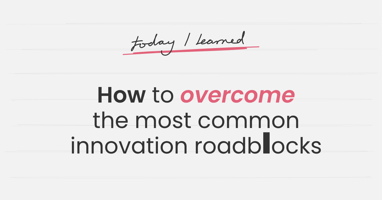Editor's note: This is the first in a series of three blog posts over the coming weeks.
Uncertainties in life are plentiful. We face stress, frustration, chaos and disappointment. To bring structure and stability in our lives and our corporations, we look to the predictable: things we can count on. What if it were possible to take the same sources causing corporate stress and instead, use them as agents to reduce chaos and actually improve enterprise business performance?
As business leaders, when we wake up in the morning there are two factors that we know are predictable that we can count on: continuous change and time. This is commonly referred to as the new norm. As we reflect on the global change we faced in the 90s, it was the first time we encountered an increased the rate of change around the world. Since the Great Recession, we have learned that the 90s were not a singular acceleration in the rate of change but rather the beginning of a new rate of continuous change due to an unpredictable global economic climate. Another constant factor is time. “Time and tide wait for no man” as they say. I have witnessed business leaders take these two constants, continuous change and time and instead of fighting the inevitable or using a crystal ball to predict the unpredictable, they have found a way to put this new norm to their competitive advantage.
For years, our most successful and largest global companies have operated with an Annual Operating Planning (AOP) cadence. The typical AOP process kicks off with planning when you are one-half to two-thirds of the way through the fiscal operating year. It starts at the very top where the corporate “C” team identifies three to five year financial targets. Next, these financial targets are turned over to the subsequent level of executive management to create the high level strategies and initiatives required to meet the financial targets. The AOP process then takes those agreed upon financials and business initiatives and proceeds through a cascading activity engaging many employees across all functions and business units, thus adding more levels of discussion, adjustment, debate, modification and input from those executing the plan.
The objective and purpose of engaging wide and deep during planning is simply alignment. Without alignment a corporation cannot execute the plan – alignment increases the ability to execute with success. To accomplish alignment, the AOP process requires a number of iterations, meetings and collaboration that occur over a three to four month period. More time is required for bigger companies with complex portfolios and less time for smaller companies with less complex portfolios. Once alignment is accomplished, the company locks down their innovation, product, M/A, distribution, cost and other enterprise initiatives required to accomplish financial and strategic targets. Budgets are also locked down and resources are assigned to the initiatives from which companies operate for the following nine months. So goes the cadence.
Today's process does not work!
Recently, I was in a collaborative session with fifteen of our global customers (ranging from $2B to $30B in size) and asked how many were struggling with their AOP process. One hundred percent of the hands went up and 85% already had actions in place to change their AOP cadence process.
Why is the corporate enterprise AOP going through a fundamental shift?
On average, it takes a company 90 days to gather information and 90 days to assimilate, analyze and prepare for planning meetings. The executive team takes 30 days for decision making and to lock down plans. By the time plans go operational the market has already moved and changed. The company's plans can often become irrelevant. By the time the enterprise reacts with counter plans it is too late and some other company has taken the first mover advantage position. In today's continuously changing economic environment and under the constant pressure of time, today's AOP process no longer serves the enterprise purpose.
A study by economists Diego Comin and Thomas Philippon showed that in 1980 a US company in the top fifth of its industry had only a 10% risk of falling out of that tier in five years; two decades later, that likelihood had risen to 25%. 1 Naim, author of the forthcoming book The End of Power, says multinationals are also more likely to suffer brand disasters due to the fast pace of change. Another study found that the five-year risk of such a disaster for companies owning the most prestigious global brands has risen in the past two decades from 20% to 82%. 1 Fortunately, I have witnessed some companies apply a new AOP process that transitions the “new norm” from high risk to high reward. Fast moving enterprises are attacking and throwing out the old AOP cadence for a new one, a cadence that no longer stands alone as a planning process but rather is integrated with operational activity. This new AOP methodology is enabling these huge corporate tankers to move in dramatically less time and take advantage of new market conditions prior to the competition.
Don't do the “same old, same old” this corporate planning season. Instead of being the victim of what we can count on (time will move and the economic environment will change), take that reality and assume them as the new norm and use them to your advantage for corporate success.
Continue to part two of this series.
1 Corporate Power Is Decaying. Get Used to It by Moisés Naím





